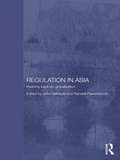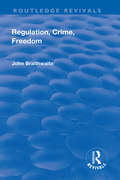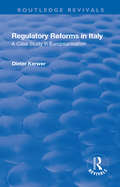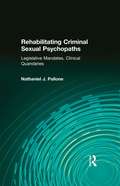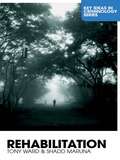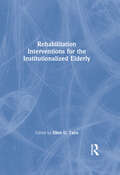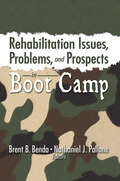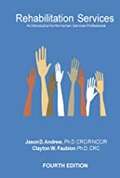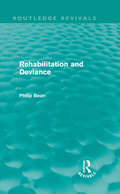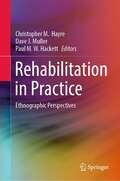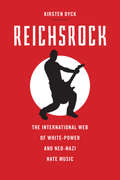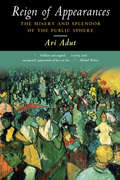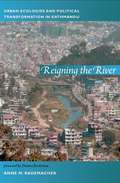- Table View
- List View
Regulation and Social Control of Incivilities (Routledge Studies in Crime and Society)
by Nina PersakThe increasing trend and prevalence of incivilities-targeting punitive regulatory measures across Europe raises important issues regarding the legitimacy, effectiveness and impact of such formal social control. Regulation and Social Control of Incivilities addresses the pertinent issues of current punitive regulation and the social control of incivilities, their trends, criminological explanations, political, spatial, cultural, representational and policing dimensions as well as the underlying behaviour it targets. Part I explores issues surrounding the regulation of incivilities, drawing examples from several European countries including Spain, Italy, Great Britain, Belgium, Slovenia and Hungary. It inspects the legal form and content of the prohibition of incivilities and the social factors that can help explain it, as well as the effectiveness and societal impact of various anti-nuisance measures. Part II focuses on social control and the representation of incivilities, including the construction and control of public nuisance in Belgium, the spatial and cultural aspects of incivilities and of law enforcement against them, the media representations of incivilities in the British and Flemish press, and the intersections between migration and control of incivilities when policing in the Netherlands. This book brings together international scholars to examine the ways in which understudied European countries approach the issue of anti-social behaviour. This multidisciplinary text will be of interest to students, scholars and policymakers concerned with issues of social control, incivilities and criminalisation.
Regulation in Asia: Pushing Back on Globalization
by John Gillespie Randall PeerenboomUnlike much analysis about regulation in Asia which focuses on globalisation and the transplant effect, leaving domestic influence over commercial regulation under-researched and under-theorized, this book focuses on how local actors influence regulatory change. It explores the complex economic and regulatory factors that generate social demand for state regulation and shows how local networks, courts, democratic processes and civil society have a huge influence on regulatory systems. It examines the particular circumstances in a wide range of Asian countries, provides transnational comparisons and comparisons with Western countries, and assesses how far local regulatory regimes increase economic value and convey competitive advantages.
Regulation of Sexual Conduct in UN Peacekeeping Operations
by Olivera SimicThis book critically examines the response of the United Nations (UN) to the problem of sexual exploitation in UN Peace Support Operations. It assesses the Secretary-General's Bulletin on Special Protection from Sexual Exploitation and Sexual Abuse (2003) (SGB) and its definition of sexual exploitation, which includes sexual relationships and prostitution. With reference to people affected by the policy (using the example of Bosnian women and UN peacekeepers), and taking account of both radical and 'sex positive' feminist perspectives, the book finds that the inclusion of consensual sexual relationships and prostitution in the definition of sexual exploitation is not tenable. The book argues that the SGB is overprotective, relies on negative gender and imperial stereotypes, and is out of step with international human rights norms and gender equality. It concludes that the SGB must be revised in consultation with those affected by it, namely local women and peacekeepers, and must fully respect their human rights and freedoms, particularly the right to privacy and sexuality rights.
Regulation, Crime and Freedom
by John BraithwaiteThis title was first published in 2000: John Braithwaite is a distinguished criminologist with an international reputation in the study of regulation and globalization. This collection contains his most important and influential essays in criminal justice and business regulation. It has a substantial introduction explaining the thematization of his work around the design of regulatory systems to maximize freedoms as non-domination.
Regulation, Crime and Freedom
by John BraithwaiteThis title was first published in 2000: John Braithwaite is a distinguished criminologist with an international reputation in the study of regulation and globalization. This collection contains his most important and influential essays in criminal justice and business regulation. It has a substantial introduction explaining the thematization of his work around the design of regulatory systems to maximize freedoms as non-domination.
Regulatory Frameworks for Hawala and Other Remittance Systems
by International Monetary FundA report from the International Monetary Fund.
Regulatory Model for Digital Rights Management: Analysis of U.S., Europe and China
by Cong XuThis book highlights the shortcomings of the present Digital Rights Management (DRM) regulations in China. Using literature reviews and comparative analysis from theoretical and empirical perspectives, it appraises different DRM restriction regulations and practices as well as current advice on balance of interests to analyze the dilemma faced by the DRM system.This research intends to help China establish a comprehensive DRM regulatory model through comparative theoretical and empirical critiques of systems in America and Europe. A newly designed DRM regulatory model should be suitable for specific Chinese features, and should consist of government regulated, self-regulated, and even unregulated sections. The new regulation model might be an addition to existing legal structures, while self-regulations/social enforcement also would be as important as legislation based on case studies.
Regulatory Reforms in Italy: A Case Study in Europeanisation
by Dieter KerwerThis title was first published in 2001. The question this thesis attempts to answer is summarized as follows: what accounts for the amazing stability of Italian transport policy in the face of European challenges, given the fact that - as most national and European policy-makers readily believe - it is not capable of addressing the problem of the sector? This study analyzes the transport policy in Italy from the 1990s into the 21st century. It looks at how the two sub-sectors of surface transport, road haulage and raliways, have been managed by the public and private actors involved. In both sectors the policy appears to have failed, either by not offering a remedy to problems or by aggravating them further. The author believes that studying transport policy in Italy will shed light on the wider question of how national policy-making patterns are influenced by developments in the international environment; in this case looking closely at the influence of the European Union.
Regulierung, Governance und Medienethik in der digitalen Gesellschaft (Mediensymposium)
by Patrik Ettinger Mark Eisenegger Marlis Prinzing Josef SeethalerUnsere stark von netzbasierten und global verflochtenen Machtstrukturen geprägten Gesellschaften offenbaren angesichts globaler Herausforderungen und Krisen (u.a. menschengemachter Klimawandel; Corona-Pandemie; Big Data und Überwachung) ungelöste Fragen zu Ethik und Regulierung der öffentlichen Kommunikation, zu deren Klärung die Kommunikations- und Medienwissenschaft einiges beitragen kann. Die Pandemie beispielsweise ist unter anderem eine kommunikative Herausforderung, an der sich die prägende Bedeutung eines ethischen Kompasses für die Orientierung und Qualität von Journalismus erweist. Für demokratische Gesellschaften bleibt der öffentliche Diskurs zwar konstitutiv, aber zugleich gewinnt die Fähigkeit, mit Dissonanz und Streit umzugehen, immer mehr an Bedeutung. Die Beiträge des Bands befassen sich mit Theoriebildung und Normsetzung, Regulierungs- und Governancestrukturen, Regulierungsinhalten und Regulierungsherausforderungen, sowie mit Überlegungen zu einer Neujustierung der Kommunikations- und Medienethik.
Rehab: An American Scandal
by Shoshana WalterPulitzer finalist Shoshana Walter exposes the country&’s failed response to the opioid crisis, and the malfeasance, corruption, and snake oil which blight the drug rehabilitation industry.Our country&’s leaders all seem to agree: People who suffer from addiction need treatment. Today, more people have access to treatment than ever before. So why isn&’t it working? The answer is that in America—where anyone can get addicted—only certain people get a real chance to recover. Despite record numbers of overdose deaths, our default response is still to punish, while rehabs across the United States fail to incorporate scientifically proven strategies and exploit patients. We&’ve heard a great deal about the opioid crisis foisted on America by Big Pharma, but we&’ve heard too little about the other half of this epidemic—the reason why so many remain mired in addiction. Until now. In this book, you&’ll find the stories of four people who represent the failures of the rehab-industrial complex, and the ways our treatment system often prevents recovery. April is a black mom in Philadelphia, who witnessed firsthand how the government&’s punitive response to the crack epidemic impeded her own mother&’s recovery—and then her own. Chris, a young middle-class white man from Louisiana, received more opportunities in his addiction than April, including the chance to go to treatment instead of prison. Yet the only program the judge permitted was one that forced him to perform unpaid back-breaking labor at for-profit companies. Wendy is a mother from a wealthy suburb of Los Angeles, whose son died in a sober living home. She began investigating for-profit treatment programs—yet law enforcement and regulators routinely ignored her warnings, allowing rehab patients to die, again and again. Larry is a surgeon who himself struggled with addiction, who would eventually become one of the first Suboxone prescribers in the nation, drawing the scrutiny of the Drug Enforcement Administration. Together, these four stories illustrate the pitfalls of a system that not only fails to meet the needs of people with addiction, but actively benefits from maintaining their lower status. They also offer insight into how we might fix that system and save lives.
Rehabilitating Criminal Sexual Psychopaths: Legislative Mandates, Clinical Quandaries
by Nathaniel J. PalloneMore than half the states in this country have legislation on sex offenders that distinguishes between those whose offense is incidental to other offenses ("felony" sexual offenders), and those who engage in "repetitive, habitual, or compulsive" sex offenses ("criminal sexual psychopaths"). This second category is the subject of this book. The legislation specifies that criminal sexual psychopaths must be treated, not punished. But treatment is problematic; the literature on various approaches finds uncertainty about the effectiveness of treatment. Pallone asks the difficult question of whether there is a prospective right to effective treatment, and notes the political and ethical questions involved in potentially more effective Clockwork Orange approaches. The ethical burden on mental health clinicians is heavy; despite the fact that the category "sexual psychopath" is essentially a legal, not a psychiatric category, judges tend to follow professional recommendations as to categorization. Pallone emerges with some surprising but convincing conclusions. If the distinction between felony and psychopathic sexual offender is essentially empty, as the profession feels it is, it should be abandoned. All criminal sexual offenders should be punished, except those who opt for treatment and who are certified by mental health professionals as likely to benefit. And for those few so identified, society should be prepared to commit significant resources to their treatment. This speculation on the past, present, and future of criminal sexual deviation comes from a psychologists with a broad command of the literature and deep professional experience in the area. Combining a broad-ranging overview of the legal, criminological, and psychiatric literature on these questions, Rehabilitating Criminal Sexual Psychopaths raises important questions. Legal experts, criminologists, mental health professionals, and all those concerned with public policy will find it significant.
Rehabilitation
by Tony Ward Shadd MarunaOver the last two decades, empirical evidence has increasingly supported the view that it is possible to reduce re-offending rates by rehabilitating offenders rather than simply punishing them. In fact, the pendulum’s swing back from a pure punishment model to a rehabilitation model is arguably one of the most significant events in modern correctional policy. This comprehensive review argues that rehabilitation should focus both on promoting human goods (i.e. providing the offender with the essential ingredients for a 'good' life), as well as reducing/avoiding risk. Offering a succinct summary and critique of the scientific approach to offender rehabilitation, this intriguing volume for students of criminology, sociology and clinical psychology gives a comprehensive evaluation of both the Risk-Need Model and the Good Lives Model. Rehabilitation is a value-laden process involving a delicate balance of the needs and desires of clinicians, clients, the State and the public. Written by two international leading academics in rehabilitation research, this book argues that intervention with offenders is not simply a matter of implementing the best therapeutic technology and leaving political and social debate to politicians and policy makers.
Rehabilitation Interventions for the Institutionalized Elderly
by Ellen D TairaGerontology professionals offer suggestions to enrich the quality of rehabilitation services offered to the institutionalized elderly. This exciting volume examines up-to-the-minute ideas--some that would have been unlikely even a few years ago--that focus exclusively on rehabilitation services for the institutionalized elderly. Despite the strong move toward more community health services in the last decade, the essential role of the nursing home in the long term care continuum is continuing to expand. Perspectives on the response of elderly persons to therapeutic interventions are addressed--including the positive effects of such techniques as touch in therapy, group psychotherapy, and verbal and activity interventions. A significant exploration of the use of technological applications to promote independent living adds a new dimension to the use of technology in the field of gerontology--often a mixed blessing to chronically ill persons.
Rehabilitation Issues, Problems, and Prospects in Boot Camp
by Brent BendaBoot camps-what are their effects on criminal behavior?Public and political support for boot camps as alternative correctional facilities has rarely faltered since their inception decades ago, though their efficacy remains uncertain. Rehabilitation Issues, Problems, and Prospects in Boot Camp explores all facets of the controversial issue, from the attitudes and perceptions of the public, to the political motivations in maintaining them, on to the latest research on the camps and their graduates. Respected authorities discuss boot camps&’ effectiveness on diverse groups according to age, gender, race, and correctional facility. Cost factors between boot camps and other correctional institutions are compared, along with the latest criminal recidivism data. Boot camps provide inmates with an uncomfortable, paramilitary-style environment with an eye toward shorter incarceration time, lower costs, and more positive effects on criminal behavior. Does this correctional model work as anticipated? Rehabilitation Issues, Problems, and Prospects in Boot Camp gives you the facts, revealing the public and political arguments for and against boot camps as well as the research on the theoretical predictors of criminal recidivism and the differing attitudes of attendees toward the facilities according to gender and race. Critical policy issues are identified and discussed in-depth, with particular emphasis given to the positive and negative aspects of rehabilitation possibilities of boot camps. Helpful tables clearly illustrate statistics while extensive references provide opportunities for further insight.Rehabilitation Issues, Problems, and Prospects in Boot Camp explores questions such as: criminal recidivism-what are the theoretical predictors? what effect does gender have on criminal recidivism? what is the effect of this hypermasculine paramilitary prison environment have on males- and females? what are the differences between Native American and non-Native American perceptions of boot camp? is the perceived severity of boot camp different for gender? what is the process for policymaking in creating and maintaining boot camps? what role does politics play in the continuation of boot camps? what corrections to boot camp facilities should be made based upon evidence and research?Rehabilitation Issues, Problems, and Prospects in Boot Camp is a thorough examination of the social and political issues about boot camps that makes essential reading for educators, students, sociologists, criminologists, psychologists, counselors, and criminal justice professionals.
Rehabilitation Services: An Introduction for the Human Services Professional
by Jason D. Andrew Clayton W. FaubionThe rehabilitation service system, as it has evolved, encompasses services provided through the federally legislated state/federal program, the not-for-profit community rehabilitation programs, and the private for profit businesses. These areas of rehabilitation and rehabilitation service have grown and evolved as an expression of public support of and services for individuals with disabilities. This chapter will attempt to highlight the history of rehabilitation in the United States by identifying the cultural context, rehabilitation-related developments, and resulting federal rehabilitation legislation in the following time frames: pre-1900s, 1900-1920s, 1930-1960s, 1960-1970s, and 1980 to date. Much of what is shared in this chapter has been written before from different perspectives. Much of it is a digest of the following works, the authors of which need to be fully credited: C. Esco Obermann's 1965 History of Vocational Rehabilitation in America;9 The U.S. Role in International Disability Activities: A History and Look Towards Future;5 G. W. Wright's 1980 Total Rehabilitation;16 A. P. Sales' 1986 History of the National Rehabilitation Association Journal of Rehabilitation,”12 and the 1999 Institute on Rehabilitation Issues.6 The reader is encouraged to review these reference sources for further detail and information that is more specific. The history of rehabilitation in the United States is, in reality, a history of the impact of its leadership.
Rehabilitation Work: Supporting Desistance and Recovery (International Series on Desistance and Rehabilitation)
by Hannah GrahamConversations about rehabilitation and how to address the drugs-crime nexus have been dominated by academics and policymakers, without due recognition of the experience and knowledge of practitioners. Not enough is known about the cultures and conditions in which rehabilitation occurs. Why is it that significant numbers of practitioners are leaving the alcohol and other drugs field, while disproportionate numbers of criminal justice practitioners are on leave? Rehabilitation Work provides a unique insight into what happens behind the closed doors of prisons, probation and parole offices, drug rehabs, and recovery support services drawing on research from Australia. This book is among the first to provide a dedicated empirical examination of the interface between the concurrent processes of desistance from crime and recovery from substance misuse, and the implications for rehabilitation work. Hannah Graham uses practitioner interviews, workforce data and researcher observations to reveal compelling differences between official accounts of rehabilitation work, and what practitioners actually do in practice. Practitioners express a desire to be the change rather than being subject to change, actively co-producing progressive reforms instead of passively coping with funding cutbacks and interagency politics. Applied examples of how practitioners collaborate, lead and innovate in the midst of challenging work are complemented with evocative illustrations of insider humour and professional resilience. This book is a key resource for students, academics and practitioners across fields including criminology and criminal justice, social work, psychology, counselling and addiction treatment.
Rehabilitation and Deviance (Routledge Revivals)
by Philip BeanFirst published in 1976, this book examines rehabilitation within the penal system in Britain in the 1970s. It argues that the ‘rehabilitative ideal’ is not the only possible alternative to a penal policy but an option which has now become institutionalized and alien to traditional concepts of justice. Using a framework derived from the sociology of law, Philip Bean looks at aspects of rehabilitation as it is operated in the courts and in certain penal institutions. He shows how the concept of rehabilitation has had an important but harmful effect on penal policy as it is often incompatible with penal aims. This book considers the impact that sentencing, social enquiry reports and modern prison policies have on rehabilitation. The concluding chapter asks for a return to concepts of justice and a move away from discussions about personal lives of deviant members of society.
Rehabilitation in Practice: Ethnographic Perspectives
by Paul M. W. Hackett Christopher M. Hayre Dave J. MullerThis book focuses on developing the use of ethnographic research for rehabilitation practitioners by recognizing its value methodologically and empirically in the field of rehabilitation. The very nature of ethnographic research offers an array of opportunities for researchers to understand the social world around them. The book identifies the multifaceted use of ethnographic methods in the rehabilitation setting. It touches on how acute and chronic conditions can affect the nature of ethnographic work in attempts to offer originality in a range of rehabilitation settings. Readers will find this collection of examples useful for informing their own research, and it aims to enlighten new discussion and arguments regarding both methodological and empirical use of ethnographic work internationally.
Rehearsal Practices of Indigenous Women Theatre Makers: Australia, Aotearoa, and Turtle Island
by Liza-Mare SyronThis transnational and transcultural study intimately investigates the theatre making practices of Indigenous women playwrights from Australia, Aotearoa, and Turtle Island. It offers a new perspective in Performance Studies employing an Indigenous standpoint, specifically an Indigenous woman’s standpoint to privilege the practices and knowledges of Maori, First Nations, and Aboriginal women playwrights. Written in the style of ethnographic narrative the author affords the reader a ringside seat in providing personal insights on the process of negotiating access to rehearsals in each specific cultural context, detailed descriptions of each rehearsal location, and describing the visceral experiences of observing Indigenous theatre makers from inside the rehearsal room. The Indigenous scholar and theatre maker draws on Rehearsal Studies as an approach to documenting the day-to-day working practices of Indigenous theatre makers and considers an Indigenous Standpoint as a valid framework for investigating contemporary Indigenous theatre practices in a colonised context.
Reichel's Care of the Elderly: Clinical Aspects of Aging (6th Edition)
by William Reichel Christine Arenson Jan Busby-Whitehead Kenneth Brummel-Smith James G. O'Brien Mary H. PalmerThe sixth edition of Reichel's Care of the Elderly: Clinical Aspects of Aging remains the pioneering text for the practicing physician confronted with the unique problems of an increasingly elderly population. Dr. William Reichel's formative text is designed as a practical and useful guide for all levels of geriatric care, from medical students to geriatric specialists. This book emphasizes clinical management and addressed problems from the simple to the highly complex. The renowned editors have revised every chapter and have included the most recent advances in elderly care. New chapters include hormonal therapy in post-menopausal women, drug therapy for Alzheimer's sufferers, alternative medicine, the chronic understaffing of nursing homes, management of delirium, and ethical issues. Comprehensive and written for any clinicians caring for older patients (including family physicians, general internists, nurse practitioners, geriatricians, and other specialists), this esteemed text provides practical and trusted advice.
Reichel’s Care of the Elderly
by Jan Laura Daniel William William Reichel Christine Arenson Jan Busby-Whitehead Samuel C. Durso Daniel Swagerty Laura Mosqueda Maria Fiatarone Singh Busby-Whitehead Durso Samuel C. Swagerty Mosqueda Arenson Christine Singh Maria Fiatarone ReichelThe sixth edition of Reichel's Care of the Elderly: Clinical Aspects of Aging remains the pioneering text for the practicing physician confronted with the unique problems of an increasingly elderly population. Dr. William Reichel's formative text is designed as a practical and useful guide for all levels of geriatric care, from medical students to geriatric specialists. This book emphasizes clinical management and addressed problems from the simple to the highly complex. The renowned editors have revised every chapter and have included the most recent advances in elderly care. New chapters include hormonal therapy in post-menopausal women, drug therapy for Alzheimer's sufferers, alternative medicine, the chronic understaffing of nursing homes, management of delirium, and ethical issues. Comprehensive and written for any clinicians caring for older patients (including family physicians, general internists, nurse practitioners, geriatricians, and other specialists), this esteemed text provides practical and trusted advice.
Reichsrock: The International Web of White-Power and Neo-Nazi Hate Music
by Kirsten DyckFrom rap to folk to punk, music has often sought to shape its listeners' political views, uniting them as a global community and inspiring them to take action. Yet the rallying potential of music can also be harnessed for sinister ends. As this groundbreaking new book reveals, white-power music has served as a key recruiting tool for neo-Nazi and racist hate groups worldwide. Reichsrock shines a light on the international white-power music industry, the fandoms it has spawned, and the virulently racist beliefs it perpetuates. Kirsten Dyck not only investigates how white-power bands and their fans have used the internet to spread their message globally, but also considers how distinctly local white-power scenes have emerged in Western Europe, Eastern Europe, Latin America, the United States, and many other sites. While exploring how white-power bands draw from a common well of nationalist, racist, and neo-Nazi ideologies, the book thus also illuminates how white-power musicians adapt their music to different locations, many of which have their own terms for defining whiteness and racial otherness. Closely tracking the online presence of white-power musicians and their fans, Dyck analyzes the virtual forums and media they use to articulate their hateful rhetoric. This book also demonstrates how this fandom has sparked spectacular violence in the real world, from bombings to mass shootings. Reichsrock thus sounds an urgent message about a global menace.
Reign of Appearances: The Misery And Splendor Of The Public Sphere
by Ari AdutThe public sphere, be it the Greek agora or the New York Times op-ed page, is the realm of appearances - not citizenship. Its central event is spectacle - not dialogue. <P><P>Public dialogue, the mantra of many intellectuals and political commentators, is but a contradiction in terms. Marked by an asymmetry between the few who act and the many who watch, the public sphere can undermine liberal democracy, law, and morality. Inauthenticity, superficiality, and objectification are the very essence of the public sphere. But the public sphere also liberates us from the bondages of private life and fosters an existentially vital aesthetic experience. <P>Reign of Appearances uses a variety of cases to reveal the logic of the public sphere, including homosexuality in Victorian England, the 2008 crash, antisemitism in Europe, confidence in American presidents, communications in social media, special prosecutor investigations, the visibility of African-Americans, violence during the French Revolution, the Islamic veil, and contemporary sexual politics. <P>This unconventional account of the public sphere is critical reading for anyone who wants to understand the effects of visibility in urban life, politics, and the media.<P>Challenges the common wisdom that the public sphere is always good for democracy.<P> Asserts that spectatorship - and not civic participation - is the essence of the public sphere.<P> Argues that spectatorship, which is a much-disdained stance, is an existentially vital aesthetic experience.
Reign of the Anunnaki: The Alien Manipulation of Our Spiritual Destiny
by Jan Erik SigdellReveals the ongoing alien manipulation of humanity and how we can break free • Explores how the Anunnaki have maintained invisible surveillance over us and how they control our development through religion, secret societies, and catastrophes • Reveals how they feed off our energies and how this ability has allowed them to remain here on Earth as multidimensional entities, enforcing their control invisibly • Explains how they established religion to control us and how Gnostic Christianity--which came from Christ and not the Anunnaki--offers a way out of their matrix of control Cuneiform texts found on clay plates in Mesopotamia tell us about an extraterrestrial race, called the Anunnaki, who came from space to exploit our planet. Through genetic manipulation, they created modern humans from existing earthly life forms to serve them as slaves. They physically left our planet millennia ago, but as Jan Erik Sigdell reveals, their influence and control over humanity is still pervasive and significant. Sigdell explains how the Anunnaki have maintained invisible surveillance over us as well as control over how humanity develops, setting limits on our evolution and holding back our development by means of manipulation and catastrophes, including the deluge immortalized in the Bible and many other ancient myths. He shows how they still manipulate our politics and affairs via secret societies, such as the Illuminati, and the political elite, such as the Bilderberg Group. Examining ancient descriptions of the Anunnaki as entities that resemble winged reptiles or amphibians, the author also explores their diet and how they feed off blood and the energies given off by lower life forms, such as humans, when they are expressing extreme negative emotions, having sex, or dying. This energy-feeding ability has allowed them to remain here on Earth as multidimensional entities, enforcing their control invisibly. He explains how the Anunnaki established religions as tools for control, setting up the major religions with themselves as “gods” and playing them against each other to keep humanity’s attention away from ongoing Anunnaki manipulation. They have also hidden from us the existence of the true highest creator, who created the cosmos as well as the Anunnaki themselves. The author reveals how the highest creator sent a messenger called Jesus to expose the Anunnaki and show us a way out of their matrix of control through a spirituality based on love, empathy, and sacred sexuality. But the “god” of the Anunnaki defeated this messenger and replaced him with a false Christ. This led to the development of Paulinian Christianity under Anunnaki influence, as well as other parallel religions such as Islam, and the suppression and elimination of the original Christianity, Gnostic Christianity. With the discovery of hidden Gnostic texts and teachings at Nag Hammadi in 1945, the way is now paved for our release from the reign of the Anunnaki.
Reigning the River: Urban Ecologies and Political Transformation in Kathmandu
by Anne RademacherA major contribution to the nascent anthropology of urban environments, Reigning the River illuminates the complexities of river restoration in Kathmandu, Nepal's capital and one of the fastest-growing cities in South Asia. In this rich ethnography, Anne M. Rademacher explores the ways that urban riverscape improvement involved multiple actors, each constructing ideals of restoration through contested histories and ideologies of belonging. She examines competing understandings of river restoration, particularly among bureaucrats in state and conservation-development agencies, cultural heritage activists, and advocates for the security of tens of thousands of rural-to-urban migrants settled along the exposed riverbed.Rademacher conducted research during a volatile period in Nepal's political history. As clashes between Maoist revolutionaries and the government intensified, the riverscape became a site of competing claims to a capital city that increasingly functioned as a last refuge from war-related violence. In this time of intense flux, efforts to ensure, create, or imagine ecological stability intersected with aspirations for political stability. Throughout her analysis, Rademacher emphasizes ecology as an important site of dislocation, entitlement, and cultural meaning.

